
All categories
Featured selections
Trade Assurance
Buyer Central
Help Center
Get the app
Become a supplier

(10341 products available)

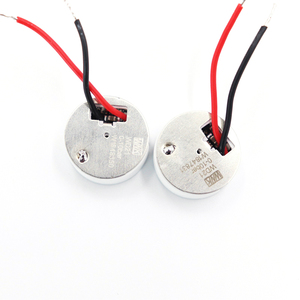



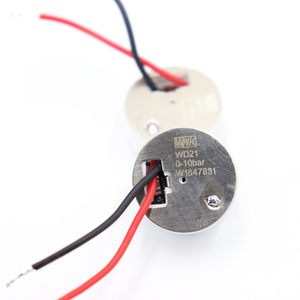












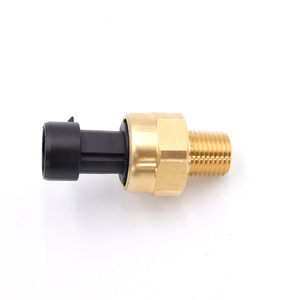



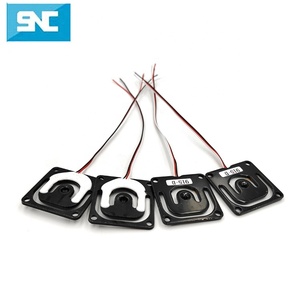










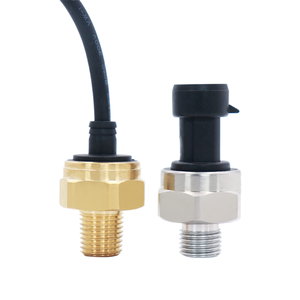

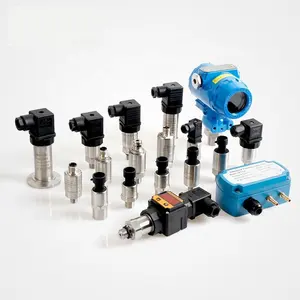






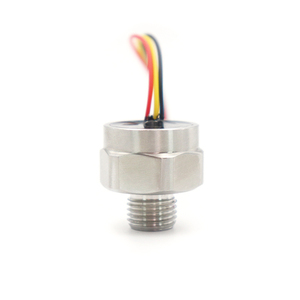




Ceramic pressure transmitters are used for precise measuring of pressure and transforming it into a proportional electrical signal. They are widely used in different industries because of their precision and endurance. Ceramic pressure transducers are famous for their outstanding sensitivity and stability and can be highly resilient, especially to harsh environments.
Absolute Pressure Sensor
This sensor type measures pressure referenced to a vacuum or near-zero pressure. Please note that it does not fluctuate with atmospheric changes, making it ideal for applications requiring precision at low pressure, such as altitude measurement and vacuum systems.
Gauge Pressure Sensor
A gauge pressure sensor measures pressure relative to atmospheric pressure. This kind of sensor measures pressure by eliminating absolute pressure and using atmospheric pressure as a reference point. Gauge pressure sensors are widely used in industries to measure pressure in gas and liquids and are commonly used in tire pressure measurements and in monitoring the pressure of gases in pipelines.
Differential Pressure Sensor
A differential pressure sensor, also called a pressure transducer, measures the difference between two pressure points. This kind of sensor will help understand how liquid or gas flows through filtration systems, pipelines, and other engineering equipment requiring differential pressure monitoring. These sensors are ideal for detecting blockages in filters or flow meters.
Hydrostatic Pressure Sensor
Hydrostatic pressure sensors are commonly used to measure fluid column pressure that generates a sensor tip by means of fluid. This is the pressure impact caused by the fluid in the current state. These sensors are often used in liquid level monitoring in tanks, wells, and canals.
Industrial Pressure Sensors
Industrial pressure sensors are widely used in mechanical, chemical, and petroleum processing industries. These sensors are specifically developed for endurance under extreme temperatures, pressures, and many environments. These sensors' reliability and performance in these environments make them suitable for heavy-duty applications.
The materials constituting ceramic pressure sensors include advanced ceramics, silicon, and metals, combined with their durability and accuracy for different applications.
Ceramic Materials
These are the most critical components of pressure sensors. They are usually chosen because they are non-corrosive and can work well in extreme temperatures with high mechanical strength. Alumina is the common ceramic material used, with exceptional hardness and chemical resistance, whereas Zirconia has superior density and sensitivity to pressure for advanced applications.
Semiconductors
Silicon or silicon carbide is mostly used in sensors to convert pressure into an electrical signal. These materials are chosen for their superb piezoresistive properties since they change resistance in response to applied pressure. Silicon sensors can be integrated into ceramic materials to form a compact and efficient pressure sensing element.
Metal Materials
Metals like stainless steel or other alloys are used to construct the outer protective casing of the ceramic pressure transmitter to protect the sensitive components from mechanical damage and adverse environmental effects. Stainless steel shows a good balance between flexibility and chemical exposure, whereas for extremely hostile environments, users can consider using other high-alloy materials like Monel or Inconel.
Durability
These sensors are developed to be extremely durable. The ceramics used in the sensor are highly resistant to chemical corrosion, which makes them suitable for harsh environments like chemical processing plants, oil refineries, and extreme weather outdoor applications. The hard ceramic surface usually protects the sensor from mechanical wear, which improves its longevity.
Temperature Resistance
Ceramic pressure sensors can maintain accuracy and functionality at these levels, as they are not significantly affected by temperature changes. This feature is critical for industries that operate under high temperature or fluctuating temperature conditions.
Ceramic pressure sensors are commercially valuable because of their wide applicability in many industries and their benefits over other technologies. They are vital tools in chemical processing, oil and gas, aerospace, and many other industries where pressure measurement is critical.
High Accuracy and Sensitivity
Ceramic pressure sensors are ranked among the most accurate and sensitive sensors on the market today. Their sensitivity aids in minute pressure changes and enables processes to be monitored and controlled with a great deal of precision. This is especially important in industries such as pharmaceuticals and semiconductors, where small fluctuations in pressure can affect the quality and safety of the product.
Versatility in Applications
Ceramic pressure sensors are widely used across industries. These sensors measure pressure of liquids and gases in industrial settings and monitor vital signs in the medical field. They also monitor the hydraulic systems used in aerospace. Their versatility makes them useful for many applications, increasing their value commercially.
Endurance and Reliability
Ceramic pressure sensors can endure hostile environments characterized by extreme temperatures and chemical exposure. Their robust build makes them extremely reliable, especially in industries such as oil and gas, in which equipment must continuously perform for long periods without failure. This reliability comes with the ability to reduce downtime and increase operational efficiency, which in turn increases commercial value.
Minimal Maintenance Costs
Ceramic pressure sensors are highly resistant to wear and tear associated with mechanical components. This reduces the need for frequent replacements and repairs and decreases maintenance costs for businesses using these sensors. Lower maintenance costs help increase the total cost of ownership, making ceramic pressure sensors an attractive choice for many businesses.
Market Demand
With industrial automation growing and increasing demand for precise measurement in various sectors, there is a demand for efficient pressure sensors. Ceramic pressure sensors are in demand due to their high performance, especially in industries that require high precision and safety.
Choosing a pressure transducer requires careful consideration of several factors to ensure the right sensor is selected for a particular application. Below are the tips to choose the most ideal ceramic pressure sensor:
Measurement Range
It is critical to select a ceramic pressure sensor whose measurement range fits the pressure levels of the application. Operating outside the intended range can lead to inaccurate readings or even damage the sensor. It is also important to keep in mind when contacting the sensor manufacturer that the measurement range should not be the maximum pressure level. Overpressure protection should always be considered.
Type of Pressure
Gauge, absolute, and differential pressure are some of the types of pressure to consider when selecting a ceramic pressure sensor. To choose the right kind of sensor, one has to determine the application requirements. For example, allowable ambient pressure variations must be accounted for by an absolute sensor, while a gauge pressure sensor can be used for atmospheric pressure measurement.
Output Signal
Ceramic pressure sensors generate outputs in the form of different signals, such as voltage, current, or digital communication. One has to ensure that the output of the sensor is compatible with the equipment used in data acquisition and processing. This simplifies integration and helps eliminate extra costs and complications that arise when handling different output types.
Environmental Conditions
Operating conditions such as temperature, humidity, and chemical exposure need to be considered when selecting a ceramic pressure sensor. Ceramic pressure sensors are chosen for how well they perform in such harsh environments. It's important to consider the environmental conditions the sensor will be exposed to to guarantee longevity and accurate performance.
Response Time
Response time is one of the important factors when selecting a ceramic pressure sensor, especially in dynamic applications where pressure levels may change rapidly, such as in fluid systems. A quick response time is required to guarantee the sensor tracks pressure changes almost instantaneously, thereby allowing for appropriate control and monitoring.
Accuracy and Calibration
Sensors should be selected based on application accuracy requirements. Review the specifications of sensors to understand the gauge and linearity errors. One should ensure that the sensor has the required calibration to maintain precision over time. Ceramic pressure sensors are generally stable with temperature and time and can be calibrated easily for accurate measurements.
A1. Ceramic materials, especially used in pressure sensors, provide superior chemical resistance, mechanical strength, and long-term thermal stability. It makes pressure sensors ideal for use in harsh or extreme environments. Ceramics also have piezoresistive properties that allow for high accuracy and sensitivity in pressure measurements.
A2. Many industries such as oil and gas, chemical processing, aerospace, and even medical fields, benefit from pressure transducers. Their small size and ability to work under fairly extreme conditions make them useful transducers in industrial processes, outdoor applications, and monitoring vital signs. These sensors measure pressure accurately for reliable performance in demanding conditions.
A3.An absolute pressure sensor measures pressure relative to a perfect vacuum. It provides a constant reference point by sealing a vacuum space above the sensing element. It becomes the reference for pressure measurement evaluation. It makes these sensors useful for measuring pressure in environments where atmospheric pressure variations are critical.
A4. Ceramic pressure sensors generally provide better chemical resistance and sensitivity in harsh environmental conditions. They offer greater accuracy in low-pressure measurements. Metal pressure sensors may be more suitable in high-pressure environments where durability and strength are needed. They are generally more affordable and easier to maintain.
A5.Temperature affects the performance of ceramic pressure sensors, but ceramic materials have a superb ability to maintain functionality across a wide temperature range. Ceramic pressure sensors work excellently in temperature variations that may affect other sensors. This property makes them useful in industries where temperature fluctuates constantly.